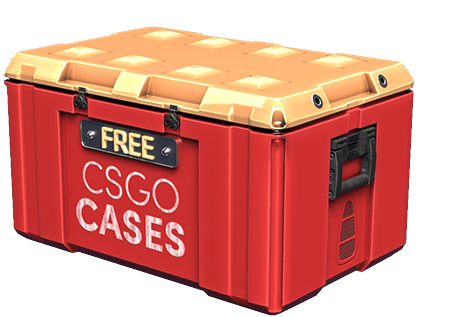Daily Pulse: Global Insights
Your daily source for news and insightful information from around the globe.
CSGO Cases: The Treasure Hunt That Keeps Gamers Coming Back for More
Dive into the thrilling world of CSGO cases! Discover rare treasures, strategies, and why gamers just can't resist this addictive hunt!
Understanding the Mechanics of CSGO Cases: How They Work and What You Can Expect
Counter-Strike: Global Offensive (CSGO) cases are a pivotal element of the game's economy, combining chance and strategy into the loot box experience. Understanding the mechanics of CSGO cases begins with acknowledging that they contain a variety of skins, stickers, and other cosmetic items that players can use to customize their in-game experience. Each case has a unique set of contents, which can include rare items that are highly sought after. The items within these cases are categorized by rarity, ranging from consumer-grade to rare special items, which determines their market value and desirability among players.
When you open a CSGO case, the outcome is determined by a random number generator (RNG), which means that what you can expect from each case is uncertain. The thrill of potentially receiving a valuable or rare skin keeps players engaged and often results in them purchasing more keys to open additional cases. However, it’s essential to understand that the odds of obtaining high-value items are typically low, meaning players should manage their expectations. Understanding the mechanics of CSGO cases and being aware of these factors can enhance your gaming experience and help you make informed decisions about purchasing and opening cases.

Counter-Strike is a popular first-person shooter game where teams of terrorists and counter-terrorists face off in various objective-based scenarios. Many players seek to improve their gameplay by studying professional players' settings and strategies. For instance, one can learn about sh1ro settings to enhance their performance and gain a competitive edge.
The Most Valuable Skins: A Guide to CSGO Case Contents
Counter-Strike: Global Offensive (CSGO) has captivated millions of players worldwide, not only through its gameplay but also via its vibrant in-game economy centered around skins. The most valuable skins are often those that are rare or have unique designs, making them highly sought after by collectors. Skins can be obtained through in-game drops, purchased from the market, or found in CSGO cases that contain a mix of regular and rare items. For instance, cases like the Chroma Knives and the Operation Hydra Case carry a plethora of skins that can fetch high prices on trading platforms.
To navigate the overwhelming array of options, players should consider several factors when gauging the value of a skin. These include the skin condition, which ranges from 'Factory New' to 'Battle-Scarred', and its float value that indicates wear. Furthermore, skins that feature popular stickers or are part of a significant CSGO event can dramatically increase in worth. Remember, investing in the most valuable skins not only elevates your in-game aesthetic but can also provide substantial returns should you choose to sell them in the future.
Are CSGO Cases Worth It? Exploring the Chances and Risks of Opening Cases
Are CSGO Cases worth it? This question has been on the minds of many gamers, especially those who are eager to get their hands on new skins and rare items. Opening CSGO cases offers a chance to receive unique weapons that enhance the gaming experience. However, the odds of obtaining high-value items can be quite low. For instance, most cases have a drop rate of about 0.1% for the coveted rare items, which means players often spend a significant amount of money before hitting the jackpot. It’s essential to weigh the chances against the costs when deciding whether to invest in cases.
In addition to the slim chances of success, there are inherent risks associated with opening CSGO cases. Players not only risk their in-game currency but also their real-world money, as purchasing cases often requires spending on keys. Moreover, the market for CSGO skins can be volatile, with prices fluctuating based on demand and rarity. Thus, gambling on cases might not always yield profitable returns. Ultimately, the decision to open cases comes down to personal preference, with some players finding enjoyment in the thrill of the chase rather than the tangible rewards it may bring.